Training birds can be a rewarding experience that enhances the bond between humans and our feathered friends. Positive reinforcement training is a highly effective and compassionate approach to bird training that focuses on rewards and reinforcements to teach desired behaviors. By utilizing this method, trainers can create a positive and enriching learning environment for their birds, leading to improved bonding, communication, and overall well-being.
Positive reinforcement training is based on the principles of behavior analysis, a scientific approach to understanding how organisms learn. It emphasizes the use of positive rewards to increase the frequency of desired behaviors while avoiding negative reinforcement and punishment. By using rewards, such as treats or praise, trainers can motivate birds to learn and perform specific actions.
Positive reinforcement training has numerous applications in bird training. It can be used to teach entertaining tricks, address behavior problems, and facilitate captive breeding practices. This method not only helps birds acquire new skills but also fosters a trusting relationship between trainers and their avian companions.
Key Takeaways:
- Positive reinforcement training is a compassionate approach that uses rewards to teach desired behaviors in birds.
- It is based on the principles of behavior analysis, emphasizing positive rewards over negative reinforcement and punishment.
- Positive reinforcement training can be used to teach tricks, address behavior problems, and facilitate captive breeding practices.
- It helps strengthen the bond between trainers and birds while promoting communication and overall well-being.
- By utilizing positive reinforcement, trainers can create a positive and enriching learning environment for their feathered companions.
The Science Behind Positive Reinforcement Training
Positive reinforcement training is grounded in the principles of behavior analysis, a scientific approach that seeks to understand how organisms learn. This method revolves around the concept of positive reinforcement, which entails presenting a pleasant stimulus to increase the frequency of desired behaviors. Unlike negative reinforcement, which involves removing an unpleasant stimulus, and punishment, which employs aversive stimuli or the removal of positive reinforcers to decrease behavior frequency, positive reinforcement training focuses on fostering cooperation and avoiding the negative impacts associated with punishment.
Behavior analysis provides valuable insights into the learning process and allows trainers to make informed decisions about the most effective training methods. By understanding the underlying principles, trainers can create a positive, nurturing environment that motivates birds to engage in desired behaviors and enhances the learning experience.
Positive reinforcement training emphasizes the use of rewards and reinforcements as a means of shaping behavior. This approach involves identifying and utilizing stimuli that birds find pleasurable, such as treats, praise, or playtime, to reinforce specific actions or responses. By consistently pairing these rewards with desired behaviors, trainers can strengthen the association between the behavior and the positive outcome, increasing the likelihood of the behavior being repeated.
“Positive reinforcement training is a powerful and effective method for teaching birds new skills and shaping their behaviors. Through this methodology, we can build trust, form strong bonds, and create a positive learning environment for birds.”
Positive reinforcement techniques are based on a deep understanding of the individual bird’s needs, motivations, and preferences. By tailoring the training to each bird’s unique characteristics, trainers can optimize the learning process and achieve remarkable results. This personalized approach ensures that the training is enjoyable for the bird, fostering a positive relationship between the bird and the trainer.
By focusing on positive reinforcement rather than punishment, trainers can avoid the potential negative consequences associated with aversive techniques. Punishment-based approaches, such as using force or fear-inducing methods, can lead to stress, fear, and a breakdown of trust in the bird-trainer relationship. In contrast, positive reinforcement training promotes a positive and cooperative dynamic, nurturing well-being and fostering a deep bond between the bird and the trainer.
The use of positive reinforcement in bird training aligns with ethical considerations and current best practices in animal welfare. It prioritizes the bird’s physical and emotional well-being, allowing for a positive and enriching training experience. By employing positive reinforcement techniques, trainers can create a harmonious environment that promotes skill development, confidence, and a strong human-bird connection.
Why Behavior Analysis Matters
Behavior analysis serves as the foundation for positive reinforcement training and plays a crucial role in enhancing our understanding of how birds learn and interact with their environment. Through the systematic study of behavior, trainers can gain insights into the motivational factors that drive birds’ actions and tailor their training methods accordingly.
Understanding behavior analysis enables trainers to:
- Identify the underlying factors influencing a bird’s behavior
- Develop effective training plans and strategies
- Anticipate and address behavior problems
- Create a positive and enriching training environment
By employing behavior analysis principles in positive reinforcement training, trainers can unlock the full potential of their feathered companions and cultivate a rewarding and mutually beneficial relationship.
The Potential of Positive Reinforcement Training
Positive reinforcement training has immense potential in the avian community. While it has long been used in the training of other animals like whales and dolphins, it is still relatively new in the world of bird training. Positive reinforcement training can dispel common misconceptions about parrots and empower bird enthusiasts to teach their birds a wide range of practical and entertaining behaviors.
With positive reinforcement training, bird owners can create a positive and enriching environment for their feathered companions. By utilizing rewards and reinforcements, trainers can address behavior problems such as biting and screaming, enhancing avian care and management. This gentle and effective approach not only modifies behavior but also strengthens the bond between birds and their trainers. Trust and cooperation are built through positive experiences, creating a harmonious and fulfilling relationship.
Captive breeding practices can also benefit from positive reinforcement training. By using rewards to encourage desired behaviors in breeding pairs, breeders can increase the success rate of reproduction and the overall health of the offspring. This method promotes natural behaviors and reduces stress, ensuring the well-being and longevity of captive birds.
Positive reinforcement training is revolutionizing the way we understand and interact with birds. By harnessing the power of rewards and positive experiences, we can unlock the potential of these intelligent and beautiful creatures, providing them with the care and training they need to thrive.
Take a look at the table below to see the potential benefits of positive reinforcement training in avian care and management:
| Benefits of Positive Reinforcement Training |
|---|
| Enhances bond between bird and trainer |
| Addresses behavior problems |
| Promotes natural behaviors in captive birds |
| Improves success rate of captive breeding |
Positive reinforcement training is a powerful tool that can transform the lives of birds and their caretakers. By embracing this method, we can create a positive and nurturing environment, enabling birds to thrive physically, mentally, and emotionally.
Learning How to Train with Positive Reinforcement
Training with positive reinforcement is a skill that can be learned and practiced. It is a gentle and effective approach that involves using cues, bridges, and shaping behaviors to teach birds desired behaviors and establish a strong bond. Let’s explore each of these elements in more detail:
Cues: Communicating Expectations
Cues are signals that convey to birds what behavior is expected of them. They can be verbal or visual, such as a word or hand gesture. When introducing a cue, it is important to be consistent and clear. Start by associating the cue with the desired behavior, reinforcing the behavior when the cue is given. Over time, birds will learn to recognize and respond to the cue consistently.
Bridges: Marking Success
Bridges, also known as markers, are used to indicate when a behavior has been performed correctly. They provide immediate feedback to birds, signaling that they have successfully followed the cue. One common form of bridge is the use of a clicker, a small handheld device that emits a distinct clicking sound. The clicker is paired with a reward, creating a positive association. The clicker becomes a powerful tool in positive reinforcement training, allowing trainers to mark precise moments of desired behavior.
Shaping Behaviors: Breaking it Down
Shaping behaviors is a technique used in positive reinforcement training to guide birds towards complex behaviors by breaking them down into small, manageable steps. Rather than expecting the bird to perform the final behavior immediately, trainers reinforce each approximation or step towards the desired behavior. As the bird becomes more proficient, they gradually shape the behavior closer to the desired outcome. This gradual shaping allows for greater success and avoids overwhelming the bird with complex tasks.
Consistency, patience, and impeccable timing are essential to successful positive reinforcement training. Trainers must consistently reinforce desired behaviors, patiently guide their birds through the shaping process, and deliver rewards promptly after marking correct behaviors with a bridge.
“Training with positive reinforcement is a beautiful journey of discovery and collaboration between trainer and bird. Through cues, bridges, and shaping behaviors, we can build trust and unlock the full potential of our avian companions.” – Jane Smith, Bird Trainer
By implementing these techniques, trainers can create a positive and enriching learning experience for their feathered friends, fostering a strong bond and empowering them to learn new skills. In the next section, we will explore the process of conditioning your bird to respond to the clicker, an essential tool in positive reinforcement training.
Conditioning Your Bird to the Clicker
Clicker training is a highly effective method for teaching birds new skills and behaviors. Before diving into specific training exercises, it is crucial to condition your bird to the clicker. Positive conditioning involves creating a strong association between the clicker’s sound and a rewarding experience, such as receiving treats.
To get started, choose a distinct and consistent clicker that will serve as a clear and reliable marker for your bird’s behavior. It can be a handheld clicker or even a smartphone app specifically designed for clicker training. The important thing is to use a sound that is unique and easily distinguishable from other noises in your bird’s environment.
Once you have your clicker, it’s time to begin the conditioning process. The goal is to establish a positive link between the sound of the clicker and the anticipation of a reward from your bird’s point of view. Here’s how:
- Start with a calm and distraction-free environment. Find a quiet space where you and your bird can focus without interruptions.
- Get your treats ready. Use small, bite-sized treats that your bird loves. Make sure they are easily and quickly consumable to maintain the flow of the training session.
- Click and treat. Click the clicker and immediately offer a treat to your bird. Repeat this process multiple times, ensuring impeccable timing between the clicker sound and the treat delivery. This association will help your bird understand that the clicker is a signal for a good outcome.
- Observe your bird’s reaction. Pay close attention to how your bird responds to the clicker sound. Look for signs of recognition, such as a sudden alertness or a slight pause in their behavior, indicating that they are connecting the clicker with the subsequent treat.
This conditioning process may take some time, as every bird is unique and will react differently. Be patient and consistent in your training sessions. Eventually, your bird will start to anticipate the reward whenever they hear the clicker, making it an effective tool to mark desired behaviors.
Remember to always follow the clicker sound with a treat during the conditioning phase. This reinforces the positive association and makes the clicker a powerful tool for communication and training.
Now that your bird is familiar with the clicker, you’re ready to progress to the next stage of clicker training. In the upcoming section, we’ll explore how to gradually introduce clicker training exercises and shape your bird’s behaviors through positive reinforcement.
Gradual Exposure to Clicker Training
Once your bird has developed a positive association with the clicker, you can gradually introduce clicker training. Starting with basic behaviors that your bird already performs naturally, such as stepping onto a perch or reaching for a toy, will set the foundation for successful clicker training.
Use the clicker to mark the desired behavior as soon as it happens, and promptly reward your bird with a treat or praise. This reinforcement will help your bird understand that the clicker sound signifies a rewarding experience. Remember, timing is crucial in clicker training, so be sure to click at the precise moment your bird exhibits the desired behavior.
As your bird becomes more responsive to clicker training, you can begin shaping more complex behaviors. Shaping involves rewarding small steps or approximations towards the desired behavior, gradually guiding your bird to achieve it. For example, if you want your bird to learn to step onto a platform, you can reward them for moving closer to the platform, then for touching it with a foot, and finally for fully stepping onto it.
Training sessions should be fun and enjoyable for both you and your bird. Keep the sessions short and frequent, as birds have shorter attention spans. Always end the training sessions on a positive note, even if your bird didn’t master the behavior completely. Consistency is key when it comes to clicker training, so make sure to use the clicker consistently and follow it up with a reward every time.
With gradual exposure to clicker training, shaping behaviors, and maintaining consistency, you will be amazed at how much your bird can learn and how strong your bond can become. Remember to have patience and enjoy the process of training and discovering new skills with your feathered friend.
Key Points:
- Gradual exposure to clicker training helps birds understand the connection between the clicker sound and a rewarding experience.
- Start with basic behaviors and use the clicker to mark the desired behavior, followed by a reward.
- Shape more complex behaviors by rewarding small steps or approximations towards the desired behavior.
- Ensure training sessions are fun, short, and frequent. End on a positive note and be consistent in using the clicker and providing rewards.
Conclusion
Clicker training is a powerful tool for teaching birds new skills and strengthening the bond between birds and trainers. Through the use of positive reinforcement, trainers can unlock the intelligence and potential of their birds, resulting in a rewarding and mutually beneficial relationship. By creating a positive association with the clicker and rewards, birds eagerly respond to the clicker sound and learn a wide array of exciting behaviors.
With patience, persistence, and a lot of love, trainers can embark on a journey of skill-building and bonding with their feathered companions. Clicker training provides a fun and effective method for birds to acquire new abilities, enhancing their overall well-being. The positive reinforcement techniques used in clicker training create a nurturing environment that fosters trust and cooperation.
Whether it’s teaching a parrot to wave hello or training a cockatiel to perform acrobatics, clicker training offers endless possibilities for both beginner and experienced bird trainers. By embracing this training method, trainers can witness the remarkable progress and growth of their feathered friends, strengthening the bond between them. So grab your clicker, treats, and embark on an exciting journey of training, positive reinforcement, and bonding with your avian companion!
FAQ
What is positive reinforcement training for birds?
Positive reinforcement training for birds is a highly effective and kind approach that uses rewards and reinforcements to teach birds desired behaviors and enhance their learning experience.
What is the science behind positive reinforcement training?
Positive reinforcement training is based on the principles of behavior analysis, a scientific approach that focuses on using positive reinforcement, such as presenting a pleasant stimulus, to increase the frequency of desired behaviors.
How can positive reinforcement training benefit bird owners?
Positive reinforcement training has immense potential in the avian community as it can dispel common misconceptions about parrots, address behavior problems, and empower bird enthusiasts to teach a wide range of behaviors to their birds.
How can I learn to train birds using positive reinforcement?
Learning how to train with positive reinforcement involves understanding cues, bridges, and shaping behaviors. Consistency, patience, and impeccable timing are key to successful positive reinforcement training.
How do I condition my bird to the clicker?
Conditioning your bird to the clicker involves associating the clicker’s sound with a rewarding experience, such as receiving treats. This can be done by clicking and immediately offering treats, ensuring impeccable timing.
How do I gradually introduce clicker training to my bird?
Start with basic behaviors that your bird already performs naturally and use the clicker to mark the desired behavior. As your bird becomes more responsive, shape more complex behaviors by rewarding small steps towards the desired behavior.
What are the benefits of clicker training for birds?
Clicker training is a powerful tool for teaching birds new skills and strengthening the bond between birds and trainers. By utilizing positive reinforcement and creating a positive association with the clicker, trainers can unlock their bird’s intelligence and potential.
What are the key takeaways from positive reinforcement training?
Positive reinforcement training with techniques like clicker training benefits both birds and trainers by fostering a positive and enriching environment, building a strong bond, and developing essential skills for birds.

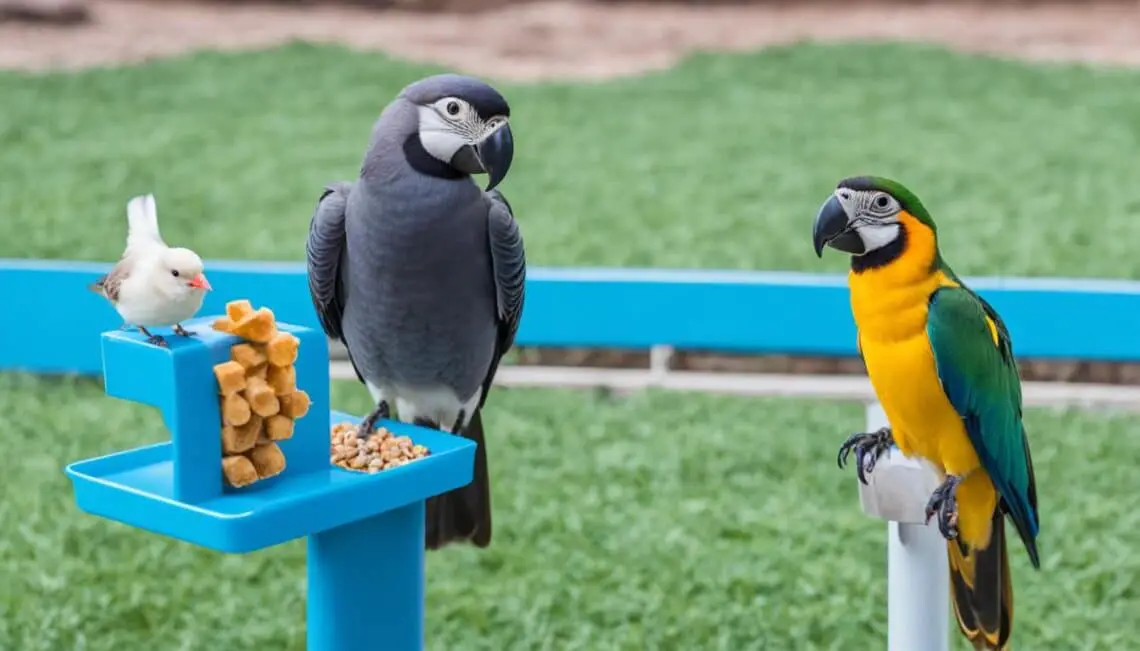
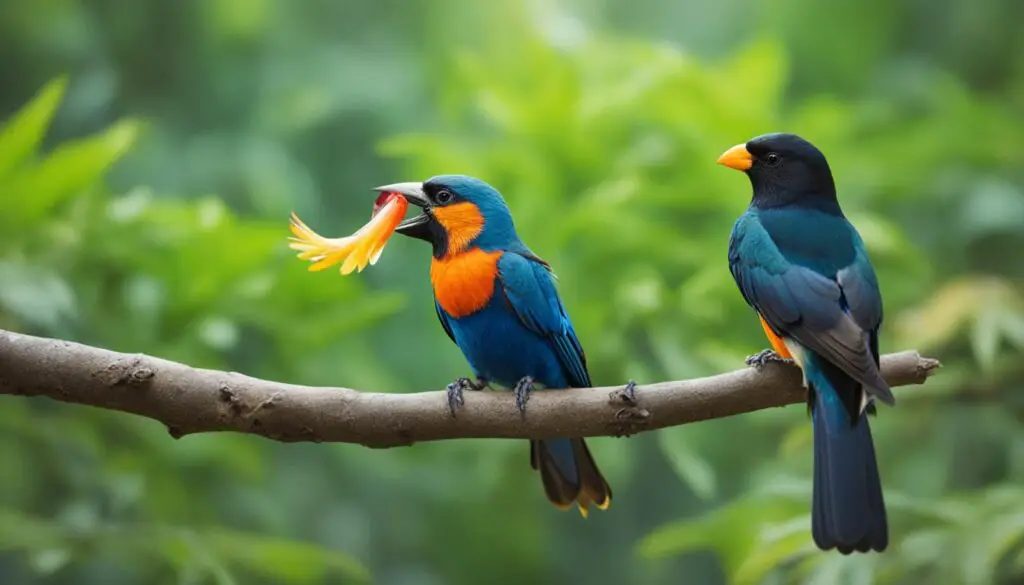
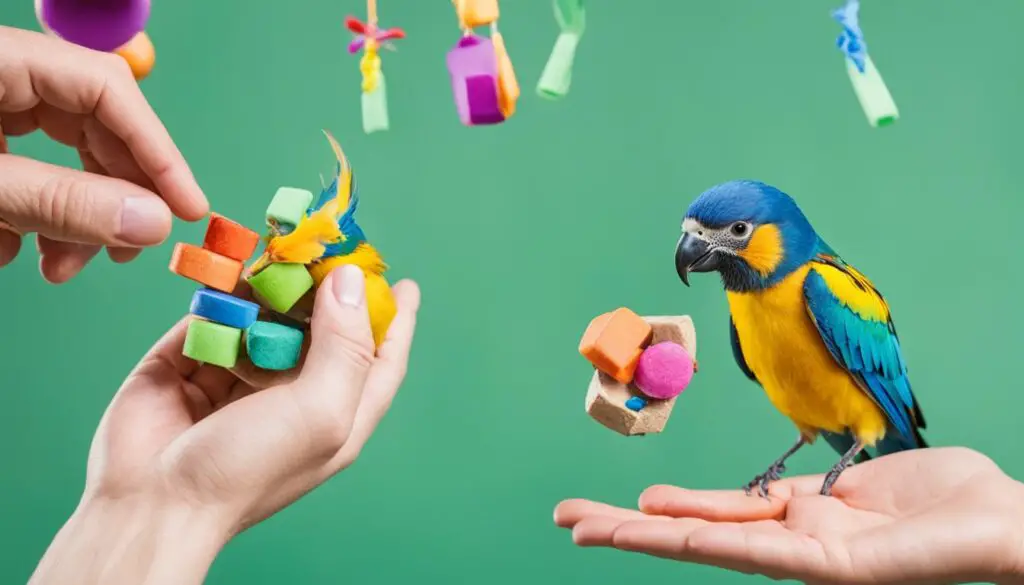

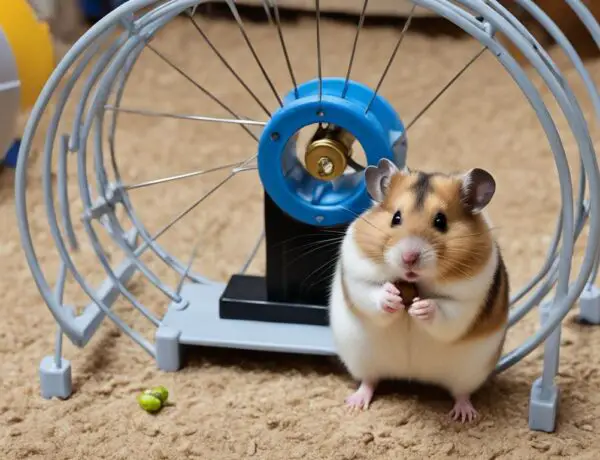
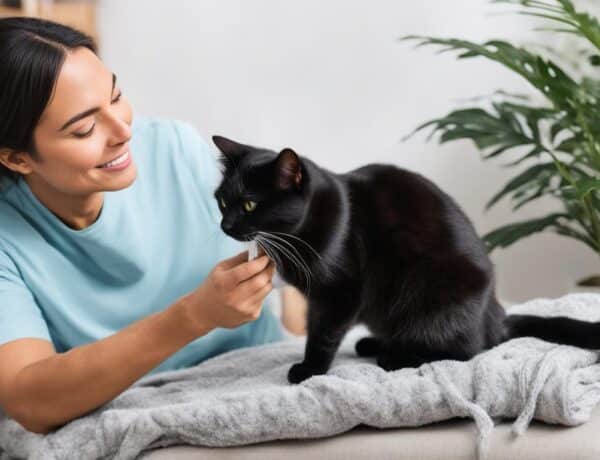
No Comments